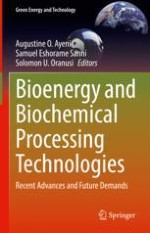2022 | OriginalPaper | Buchkapitel
Production of Rhamnolipid Biosurfactant from Waste Cooking Oil Using Pseudomonas putida in a Batch Reactor
verfasst von : O. O. Sadare, T. Mokhutsane, M. O. Daramola
Erschienen in: Bioenergy and Biochemical Processing Technologies
Aktivieren Sie unsere intelligente Suche, um passende Fachinhalte oder Patente zu finden.
Wählen Sie Textabschnitte aus um mit Künstlicher Intelligenz passenden Patente zu finden. powered by
Markieren Sie Textabschnitte, um KI-gestützt weitere passende Inhalte zu finden. powered by
